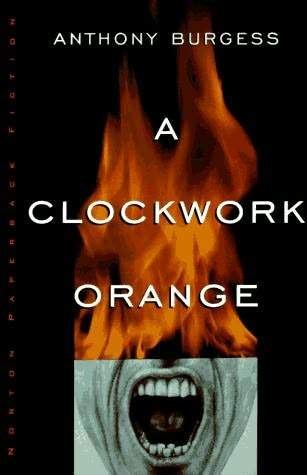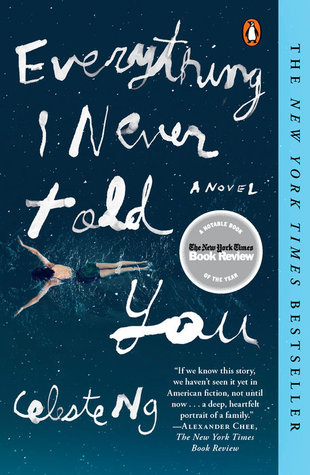A Clockwork Orange was first published in 1962 by Anthony Burgess in England and, despite the “ultraviolence”, it became a worldwide sensation. It could have been forgotten while fading away into obscurity with new generations of books to take its place in shock value, but that seems impossible for the time being because of Stanley Kubrick’s 1971 movie by the same name, officially cementing the book into permanent pop culture stardom with a cultlike following. Interestingly, the movie was banned in England after a year because of copycat crimes. W.W. Norton Company | April, 1995 (first published in 1962) | Paperback | 212 pp
I can’t truly provide an adequate review of A Clockwork Orange for several reasons: There are a million reviews in existence, each with subjects that have been dissected a million times; most of you have already read the book so what’s the point?; I’ve been tainted by the movie (haven’t we all?); I’m not a student of the ethos and the pathos or social pathology by any stretch; I’m not a linguist. Still, I wanted to gather up my thoughts, as random as they may be, for a casual discussion and cinema comparison.
A brief summary: Alex is the fifteen-year-old leader of a nighttime gang who terrorizes the streets with violence, robberies, and rape. It’s a futuristic time (from when it was penned) where this sort of violence is commonplace and the wayward youth have taken over the night. After a spat with his “brothers”, he finds himself betrayed and then jailed for murder. After a few years of prison, he’s chosen for a new experimental treatment that promises to cure him in one month. It’s an effort to do something different because of the prison population problem. The treatment causes Alex to become physically ill when viewing or contemplating violence or rape. After Alex tries to commit suicide, his case becomes national news and politicized.
I watched the movie years and years ago, when I was in my teens. I had not read the book, only watched the movie at the behest of my friends. I walked away thinking: what? The movie was disturbing and felt much too offensive. This was likely due to my young and impressionable age. I didn’t like it much. I decided to watch it again, over twenty years later now, before reading the book and I’m glad I did. Not only did I love the movie this go round, it helped my reading of this very difficult book. And since much of the movie is narrated by the main character, I heard his voice while reading (I simply love that).
For the most part, the film follows the book. There are a few minor differences: He’s very young in the book but looks much older in the film, the first act of violence has been omitted from the film, he’s recognized by someone he once harmed by his slang in the book but by his singing in the movie, one of the two policemen he comes across toward the end is different, and some other small differences. There are no major changes that take away from the meaning or overall feeling: save one.
A Clockwork Orange is broken up into three sections of seven chapters each. However, America, and America only, had the final chapter omitted in its first publications. It is also omitted in the movie. This final chapter shows Alex changing in thought and desire, contemplating giving up his life of crime. The American publisher thought Americans wouldn’t like this. My updated book has the final chapter and a forward from the author entitled A Clockwork Orange Resucked. In this forward, he laments that this book is his most known work – he wishes it wasn’t. He wishes to be entirely disassociated with the book. Many great artists have hated their most famous work.
There are many points of fascination with the book and film. One is the language. I mentioned that this book is a difficult read, and that is because of the slang involved. We’re all familiar with our own regional slang, but the author went a step forward to create a sophisticated slang set in the future, completely unknown to the new reader. The author took several common words, and simply replaced them with the new slang. But there are a lot of replaced words, and you need a Clockwork Orange dictionary to get through the first page (yes, they exist). This is why watching the movie in preparation for a read helps as well – many of the words become clear upon listening to the context. The language is one way the author separates the wayward youth and crime element from the rest of society. It is way for the youth to distinguish themselves, and possibly signal their malevolence.
Another interesting element is music. Alex loves music, and notably – he loves classical music. During his institutional reprogramming, classical music plays as the score to the videos he’s forced to watch and he’s massively upset. He’s afraid that hearing this music will also make him sick, and he’s right. After the experimental treatment, he can no longer bear listening to his beloved music. In the beginning of the book, he remarks that some people theorize the young have taken to crime because they haven’t been exposed to real culture, like classical music. He finds this amusing, since it is this music he hears when he commits crime.
Another great topic for discussion is choice. Opponents to the new treatment say that choice (to be good or not) has been taken from Alex. His prison chaplain struggles with the concept. He believes that God wants you to choose goodness, and not have it chosen for you, to be truly good. But, since Alex chose to participate in the experiment, isn’t Alex then choosing goodness? (In reality, we know it’s because Alex just wants to get out of prison – and that he sucked up to the chaplain for nothing more than benefits).
Now for the warnings. Although it isn’t depicted in a gratuitous way, a brutal rape occurs in both the movie and the book. The book simply mentions that Alex and his friends did the deed, and the movie shows much more of the violence (neither depicts the actual act). Also, while the movie has a great consensual sex scene, it is very, very different in the book – and highly disturbing. It is not consensual and does not involve age-appropriate characters.
My suggestion (and a rare one indeed) is to watch the movie first. If you’re interested, read the book next – and get your Clockwork Orange dictionary out! This is a tremendous read perfect for books clubs – there will be no shortage of discussion topics, I assure you.
A Clockwork Orange
by Anthony Burgess
Bookstagram





